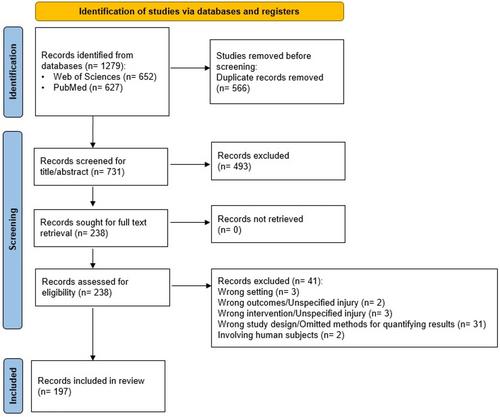Preclinical Vocal Fold and Airway Injury Models: A Scoping Review
Abstract
Objectives
Preclinical models are necessary to study the pathophysiology of laryngotracheal diseases and novel treatments. Currently, there is no consensus on species, injury mechanics, and study duration This review provides a contemporary overview of the studies of vocal fold and laryngotracheal injuries in preclinical models.
Methods
A search was performed in PubMed and Web of Science involving various animal models undergoing vocal fold, trachea, and laryngotracheal injury and/or wound healing studies from 2013 to 2023. Articles were independently screened and selected by four reviewers.
Results
Of 1279 filtered studies, 197 studies were identified and categorized by species, study duration, and mechanism of injury (MOI): vocal fold stripping, intubation, lasers, microtools, scraping, and other MOIs. Within each MOI, studies were grouped by animal model, with subsections discussing tissue target, research aim, analysis method, and study duration. Leporine and rat models were the most employed animal models for both vocal fold wound healing and laryngotracheal models. Leporine studies had the broadest diversity in MOIs, with lasers, microtools, scraping, and other methods used. Comparatively, rat studies primarily utilized vocal fold stripping as a MOI, perhaps second to anatomic limitations. Larger species, specifically porcine models, were most prevalent in intubation injury studies. Ferret, mouse, and ovine models were less utilized. Study duration varied from 1 day to 3 months in vocal fold injury models and 30 min to 12 months in laryngotracheal injuries.
Conclusion
This review provides a foundational framework to collate and interpret available data on preclinical vocal fold and laryngotracheal injury models to guide future study design.
Level of Evidence
Five scoping review/NA.


 求助内容:
求助内容: 应助结果提醒方式:
应助结果提醒方式:


